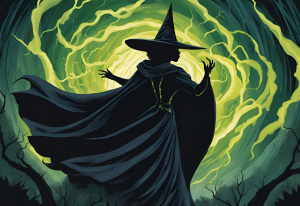While celebrities have always had devoted fans, advances in technology have made it easy for super fans to take their obsessions to new unhealthy levels.
Sailing throughout the various oceans of the Internet, you may encounter the term “stan.” The word stems from the 1999 Eminem song of the same name. Along with its music video, “Stan” tells the fictional tale of a crazed Eminem fan. As his pregnant girlfriend expresses her concerns over his unhealthy Eminem addiction, Stan breaks into a furious tantrum, beats her, and retreats to his Eminem themed basement to write fan mail. Eminem raps as Stan throughout the song’s verses, narrating the twisted letters sent from fan to idol. “I even got a tattoo with your name across the chest. Sometimes I even cut myself to see how much it bleeds.” The rapper never responds to Stan’s mail, thus propelling the fan into a fiery fury of insanity. He murders his girlfriend, shoves her body in the trunk of his car, and drives off a bridge while recording one last message for his favorite celebrity.
Despite its gruesome origin, the word has taken on its own life and meaning. To “stan” is to pledge one’s allegiance to a celebrity. It’s an oath of loyalty to the artist that transcends casual admiration. Urban Dictionary defines it as, “an overzealous maniacal fan of any celebrity or athlete.” Internetslang.com simply describes a stan as “a stalker fan.” While these Internet definitions tote negative connotations, not all stans are insane.
Unfortunately, however, the term’s ambiguity meshes devotion with lunacy. A Beyoncé stan could refer to a fourteen-year-old girl who looks up to the pop star as a role model. Perhaps she owns every album, or saves her allowance to buy a concert ticket.
A Beyoncé stan could also refer to a deranged thirty-three year old man who breaks into Mrs. Carter’s house in order to serenade her sleeping body with an eerie lullaby rendition of “Partition.”
It’s time to consider readjusting the definition. If you admit to stanning for Katy Perry, it’s not fair for the world to assume that you’ve spent the past year collecting her toenails in Ziploc bags.
Stans mirroring Eminem’s fictional character unfortunately do exist: several celebrities have filed restraining orders after brushes with stalkers, Paula Abdul’s “biggest fan” killed herself outside of the singer’s home, and Latina pop star, Selena Quintanilla, was notoriously murdered by the president of her fan club.
Stanning has increased in popularity with the rise of the Internet and the evolution of fandoms, or groups of stans. Fandoms aren’t new developments; Trekkies and Dead Heads are some of the more culturally significant. Today’s notorious fandoms include: Little Monsters (Lady Gaga), Beliebers (Justin Bieber), and Directioners (One Direction).
On the battlefields of Tumblr and Twitter, stan wars rage between almost every fandom. Nothing has to spur the conflict; Directioners will clash with Beliebers simply because they both support artists that compete in the industry.
Using death threats, cyber bullying, and (in extreme cases) computer hacking as weapons, these extreme stans besmirch anyone or anything that poses a threat to their favorite celebrity.
I must admit—I identify myself as a Little Monster. Do I stan for Lady Gaga? Let’s say I diet-stan. I adore the artist, but I have no desire to sneak into her apartment or threaten her haters. Contrary to stan stereotype, you do not have to abandon basic human morals to support a celebrity. Instead, support the artist by promoting their music or moral message.
Unfortunately, the Little Monsters have become one of the more notorious fan bases. After Kelly Osbourne poked fun at Gaga on Fashion Police, extreme stans galloped to Twitter to threaten Kelly and her family. Although these rabid stans don’t represent every Little Monster’s thoughts and feelings, their extreme antics continue to tarnish the artist and her fan base as a whole.
Unfortunately, the artist doesn’t have much control over what her fans do or say. Lady Gaga has disciplined her Little Monsters numerous times, but they still take up the role of attack dog.
“To affiliate yourself with a mainstream artist today is just like the unwavering loyalty that sports teams have, like the Giants or the Celtics,” says David Russell, an artist manager at Internet Explorer.
The stan culture has its pros and cons. People find inspiration from linking themselves to an artist. For instance, think about how many young women were given confidence because of Demi Lovato.
While there’s no harm in admiring the artist, problems arise when stans become obsessive, expressing their affection via inhumane methods. Isn’t that exactly what celebrity stalkers have done in the past? They stooped to insane and irrational measures in order to “show their love” for the artist.
This week, Demi Lovato tweeted in response to stan wars, “Dear Lovatics, for every hater tweet—don’t respond with hate, but love and positivity. Try love instead of combat.”
Following these words, perhaps we can move past cattiness and derangement and towards an acceptance of differing viewpoints. Though, if you would like to continue to act like a lunatic to support a celebrity, see Stephen King’s Misery—maybe you’ll have a change of heart.















Be First to Comment